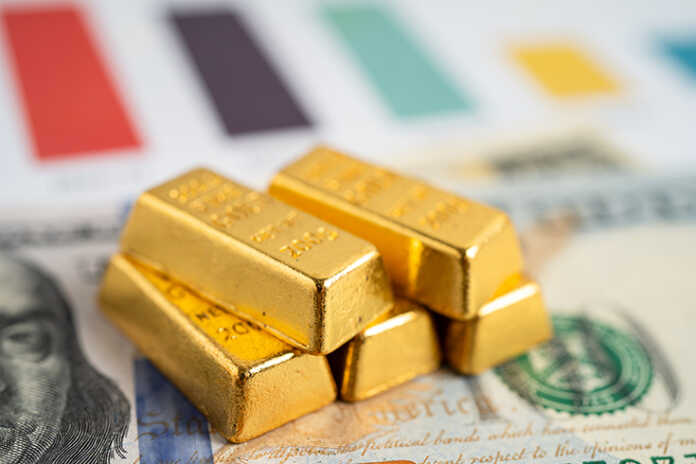This stability comes after a slight dip to its lowest point since the beginning of March, at $1,906 per ounce on last Tuesday. Meanwhile, U.S. gold futures experienced a minor decline of 0.3%, settling at $1,923.40. This relative calm in the gold market is particularly noteworthy as investors around the globe brace for the U.S. Federal Reserve’s anticipated interest rate hike—the first of its kind in the pandemic era.
Geopolitical Tensions and Gold’s Outlook
The Federal Reserve’s upcoming decision is eagerly awaited, with expectations of an interest rate increase to combat the soaring inflation rates that have plagued the economy. Gold’s sensitivity to U.S. interest rates is well-documented, as higher yields on U.S. Treasury notes typically elevate the opportunity cost of holding non-yielding bullion. Despite this, gold has shown resilience, buoyed in part by a weakening dollar, which tends to make gold more attractive to investors holding other currencies.
The ongoing Russia-Ukraine conflict adds another layer of complexity to gold’s outlook. According to Han Tan, chief market analyst at Exinity, the gold market is currently in a holding pattern, awaiting clear signals from the Fed. However, the situation in Eastern Europe remains a critical factor, with any escalation likely to push gold prices higher as investors seek safe-haven assets.
The potential for increased gold purchases by central banks, particularly those looking to diversify away from Western currencies like the euro and dollar, further complicates the forecast for gold’s future. This trend could gain momentum in the aftermath of the current wars, signaling a fundamental shift in the global financial system’s dynamics.
Silver, Platinum, and Palladium
While gold captures the headlines, other precious metals also warrant attention. Silver saw a slight decrease of 0.5% to $24.74 per ounce, whereas platinum experienced a significant rise of 2.7%, reaching $1,012.55. Palladium, too, showed strength, gaining 2% to $2,471.55, moving away from recent lows amid easing supply concerns.
In conclusion, as we stand at the crossroads of economic recovery and ongoing geopolitical strife, gold’s role as a stabilizing force cannot be overstated. The coming weeks will undoubtedly bring new challenges and opportunities in the gold market, shaped by the Federal Reserve’s policy decisions and the evolving global landscape.
![]()








